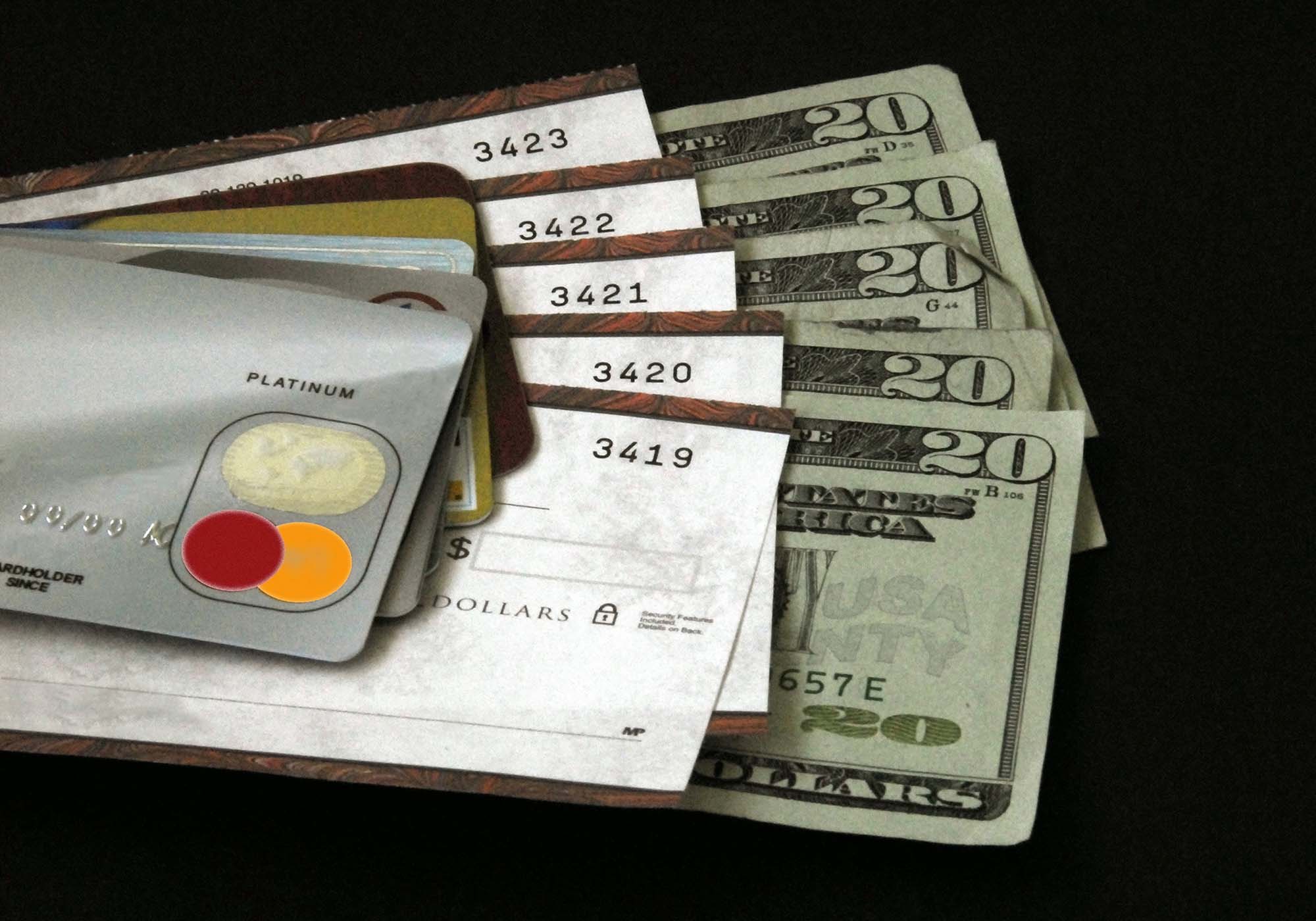September 9, 2021
In the News
eNews Poll Shows Traditional Payment Methods Still on Top
Bryan Mason, editorial associate
Despite a year riddled with massive supply chain disruptions, labor shortages and trade complications, the most popular methods of business-to-business payments remained checks followed by ACH and credit cards, respectively, according to a recent NACM eNews poll. (Credit professionals were asked to share the top three methods their customers use today when paying open account invoices.)
However, the gap between checks (93%) and ACH (92%) payment methods closed significantly compared with a similar eNews poll conducted nearly a year ago—checks, 69% vs. ACH, 23%. Credit card usage also was significantly higher—65% vs. 6% last year.
“Check and ACH payments are the most convenient manner in which we accept payment at Graves Lumber, and I do not expect that to change in the short- or long-term future,” said Christopher Roshong, credit manager at Graves Lumber Company (Akron, OH). “I believe payment by checks and ACH will long be the main types of payments both presented and accepted from our customers due to their [familiarity], low usage costs and widespread acceptance among vendors.”
Stuart Epstein, accounts receivable manager at Napa Auto (Roxboro, NC), agreed. Both ACH payments and checks “are very convenient and aren't expected to change much.” However, some survey takers indicated they are looking for ways to improve the processing of these payments to further benefit collection efforts.
“ACH and checks are the most common ways our domestic customers pay right now,” a credit professional said. “We receive wire payments from international customers, and we’re working on adding e-checks as a payment method. Credit cards are popular with smaller customers because they like earning points; but credit card processing is time consuming, and the processing fees are expensive.”
He described two changes his company is implementing: a web portal for customers to pay by e-check or credit card and a change to “Tier 3” credit card processing to reduce processing fees while also charging customers a fee to pay by credit card. (Companies that use Tier 3 credit card processing save money on processing charges in exchange for additional transaction data.)
“Customers can take early payment discounts for payments by ACH and checks, or they can earn points from their credit card providers,” another credit professional said. This allows customers to choose a form of payment that will save them the most money.
Although payment automation has revolutionized the credit industry, Connie Woodward-Haas, CCE, credit manager at Steelscape (Kalama, WA), voiced that her company “still has some accounts that are resisting the automation change. I am not certain if it is because of their size, location or their IT resources, but they have been unable to facilitate setting the customer up for ACH payments on a recurring basis,” she said. Additionally, she claims that much of their remittance support is not coming from banks either because it seems “they are not receiving the remittance information themselves in a consistent file type that they could pass on to us.”
Woodward-Haas expects improvements in the exchange of remittance data and has observed steps taken to achieve that goal while enhancing the credit managers’ ability to apply cash quickly with little human interaction. “We have one bank that is now using a platform to deliver remittances to us directly from multiple accounts at the time they issue payments with no charge to us for the service,” Woodward-Haas said. “I would expect other banks to adopt similar procedures; and eventually, I foresee the receiving bank would be able to generate a complete data dump of everything paid electronically.”
On another note, the use of cryptocurrency and cash tied at 3% as top forms of payment. However, one credit professional stated that although they have never received a request to pay by bitcoin, Venmo or PayPal, “it would be cool if they accepted it.”
Labor Shortage Is Getting Worse
but Credit Departments May Be Prepared
Annacaroline Caruso, editorial associate
The labor crisis deepened significantly in August with the market’s worst monthly numbers since the start of 2021, according to data released Friday by the U.S. Labor Department. The United States added back only 235,000 jobs last month, less than a quarter of the jobs added in July.
This slowdown comes despite recently expired federal unemployment benefits and a record number of more than 10 million job openings. “The Delta variant of COVID-19 appears to have dented the job market recovery,” said Mark Zandi, chief economist of Moody’s Analytics, in a report earlier this month. “Job growth remains inextricably tied to the path of the pandemic.”
However, some industries are struggling to attract and keep workers more than others. Businesses in manufacturing, retail and construction are among the hardest hit by the workforce crisis. In particular, the construction industry will need to hire at least 430,000 more workers this year to keep up with demand, according to Associated Builders and Contractors. But hitting that goal is looking more unlikely. "We're losing more people than we're bringing into the industry," Matthew Schimenti, owner of Schimenti Construction Company, told CNN.
Similar to the construction industry, credit and collections departments historically have faced worker shortages, and the pandemic only has exacerbated the problem. “Qualified credit professionals who are skilled and talented in their craft are always in short supply and high demand,” said Chris Myers, president and CEO of Professional Alternatives staffing agency (Houston, TX).
Credit managers are accustomed to finding creative ways to get the job done with a limited amount of people. “We are always understaffed in credit departments,” said Leslie Harrison, CGA, vice president of membership, staffing and HR at NACM Connect. “We’re more prepared to go without because we’ve always gone without.”
Now is the time to find more innovative ways to fill credit department positions, she added. “People are much more hesitant to go back to work in today’s world than ever before, so the opportunity that you’re offering better be enticing.”
Many companies have turned to increasing wages, but workers are looking for much more in today’s job market. According to a recent U.S. Chamber poll, nearly four in 10 (39%) unemployed Americans who lost their jobs during the pandemic and who are not actively looking for work said that a $1,000 hiring bonus would help convince them to return to full-time employment. Others said work-from-home flexibility (32%) and worker vaccination requirements (23%) would influence their decision to return to the workforce.
Some experts recommend businesses go even further to attract workers, who today are driven less by money and more by benefits and company culture. There is a disconnect between what some companies are willing to offer and what potential employees expect, Myers said. “The whole workplace dynamic has changed in the last 18 months. You have a fair number of workers who are trying to decide exactly how they want to work in this new environment.”
But Myers said it is only a matter of time before this imbalance in the workforce is corrected. “At some point, the labor market will find its equilibrium again,” he added. “Companies will either change some of their expectations or candidates will change some of their expectations.”
Washington Case Law Demonstrates the Importance of Understanding Lien Deadlines
Bryan Mason, editorial associate
Lien statutes have long been an effective leveraging tool for credit professionals looking to collect outstanding payments on a construction project. However, as a recent court case points out, warranty work does not extend the deadline to record a lien claim.
A recent case, Brashear Electric, Inc. v. Norcal Properties, LLC, before the Washington Court of Appeals exemplifies how certain misconceptions can be costly. Brashear Electric, Inc. had served as a subcontractor on two adjacent projects—one owned by Norcal Properties, and the other by Blue Bridge Properties. Both projects included a one-year warranty. More than 90 days after Brashear’s last work on either project, a leak was discovered in the Norcal building’s roof. Brashear fixed the issue under the warranty and also repaired a loose light connection on the Blue Bridge building. It was later discovered that Brashear was not responsible for the roof leak.
Following the warranty work, Brashear promptly recorded liens against both properties, and then filed an action to foreclose on the liens. Norcal and Blue Bridge argued that warranty work does not extend the 90-day period to record a claim of lien. The trial court ruled in their favor, and Brashear appealed. The appeals court determined that contractors are not hired and paid to correct their own nonconforming work and that warranty work is not subject to the protections of the lien statute. The fact that Brashear was not ultimately responsible for the roof leak had no apparent impact on the court’s analysis.
Therefore, the court found that Brashear Electric’s liens were untimely considering Washington’s 90-day deadline to record a lien begins when the contract at issue is substantially complete. “Subcontractors and suppliers should never rely on warranty work, punch list items or replacement items to extend their filing deadlines,” said Connie Baker, CBA, director of operations for NACM Secured Transaction Services (STS). Instead, she advises that they look at their last substantial shipment to the job or original contract work date to track their filing deadline.
Baker uses an example from her own experience with NACM STS where a client had to file a lien within 90 days of the last furnishing date. The client used a “branch pick up” as the last furnishing date but the owner argued that the last furnishing date was the last substantial shipment to the job—taking them beyond the 90 days from the last furnishing window.
“Our client spent a lot of money arguing that the pick-up date should be allowed as the last furnishing date, which would make the filing timely,” Baker said. “Arguing your last furnishing date in a foreclosure to allow your lien to be filed timely can get very expensive. This customer was owed $95,000, so they spent the money to argue their last furnishing date. They even conducted depositions; but in the end, the judge ruled not to allow the branch pick up as their last furnishing date.”
Why Leaders Make Bad Decisions and How to Make Better Ones
Marlene Chism, Marlene Chism Consulting
Where there is unresolved or mismanaged conflict, connect the dots to see how the issues relate to ineffective decision-making or misaligned choices. When leaders understand the power of decision-making and the ripple effect of choices, they can shape the culture, drive growth and reduce costly mistakes. This post highlights three ways leaders make poor decisions and how to make better ones.
Lack of clarity
When employees (or leaders) aren’t clear about who makes the decision and what the decision-making process is, boundaries get crossed and misunderstandings escalate into high conflict. When faced with conflict, it’s common to jump to a solution too fast. Action before clarity leads to making wrong decisions—for example, moving someone around to a different department to reduce conflict instead of having a difficult conversation about behavior. Another example is offering a workshop for disruptive employees when the real issue is leadership development.
What to do: Remind yourself that conflict isn’t the problem, mismanagement is. Slow down. Notice your discomfort and your urge to take immediate action, but wait until you can clearly describe the current situation with facts instead of assumptions. Next, articulate the desired outcome. Write a situation analysis, and you’ll see how difficult clarity can be. Try describing the desired outcome without getting distracted or getting decision-fatigue.
These two points of reference (the current situation and the desired outcome) give you enough clarity to see the obstacles and the next right step
Mistaking choices for decisions
Most of us use the words “choice” and “decision” interchangeably to describe the same actions but distinguishing between those two words clears confusion. A decision is bigger than a choice. A decision is strategic, and a choice is tactical. A decision is like an island, and the choice is like a boat full of rowers. In other words, decisions give direction. Decisions are made in advance so that choices are easy to make.
I recently spoke with a leader who was dealing with a disruptive employee who was on final warning. The choice was whether to terminate employment. When we looked at the policy (previous decisions) and the employee’s behaviors, the answer was easy. Making exception after exception means one of two things: Either the previous decisions aren’t workable, or it’s not clear how to align choices to decisions.
What to do: When faced with what seems like a difficult choice, first look at previous decisions to help make your choices easier. Look at mission, vision, values, characteristics and policy, then be guided by the decisions already made. Just as you should not set boundaries you don’t intend to keep; don’t make policies you don’t intend to enforce.
Misunderstanding the basis of choice
Alignment occurs when choices agree with decisions made in advance. For example, if it has been decided that the company always promotes from within, it’s an easy choice to seek internal candidates first. If you decide to eat healthy, it’s easier to drive past the fast-food joint. Unfortunately, most choices are based on something other than well-thought-out decisions. Sometimes our choices are based on convenience, fun, avoiding risk or looking good.
To make it practical, let’s say you know you need to initiate a difficult conversation with a star employee who has a few behavioral problems, but you keep putting it off. Your choice to avoid may be based on protecting the employee, the need to be liked or the fear of experiencing uncomfortable emotions.
Much of the time we are unaware of hidden motives. Although the choice is there, we simply react on the basis of some unknown motivator.
What to do: Become aware of your actions and ask whether you were aware of your choices at the time or whether you taking the path of least resistance. Make a list of what motivates you, and notice when you are more likely to react or make choices that are misaligned with higher priorities. You can use this same technique when coaching other leaders or employees.
Conclusion
Where there’s mismanaged conflict, look at how decisions are made in the organization. When employees don’t understand who makes the decision or how decisions influence choices, there will be misalignment. And where there’s misalignment there will be conflict.
Better decision-making means better choices, and better choices means better conflict management, and better conflict management means higher productivity and less stress.
Marlene Chism is a consultant, international speaker and author of "Stop Workplace Drama" (Wiley 2011), "No-Drama Leadership" (Bibliomotion 2015) and the forthcoming book "From Conflict to Courage" (Berrett-Koehler 2022). She is a recognized expert on the LinkedIn Global Learning platform. Connect with Chism via LinkedIn or at MarleneChism.com.
Reprinted with permission by SmartBrief.
-
APRIL
22
3pm ET -
Do You Know Who You Are Selling to?
Speaker: Emory Potter, Esq., Hays & Potter, LLP
Duration: 60 minutes
-
Where the Buck Stops: Establishing KYC &
Export Compliance Best Practices
Speaker: Paul J. DiVecchio, principal of DiVecchio & Associates
Duration: 60 minutes -
APRIL
24
11am ET
-
APRIL
29
3pm ET -
Just a Little off the Top: Strategies for Reducing the Growing Cost of B2B Credit Card Acceptance
Speakers: Lowenstein Sandler Partner Andrew Behlmann and
Colleen Restel, Esq.
Duration: 60 minute
-
Collections 101
Speaker: JoAnn Malz, CCE, ICCE, Director of Credit, Collections, and
Billing with The Imagine Group
Duration: 60 minutes -
MAY
7
11am ET








